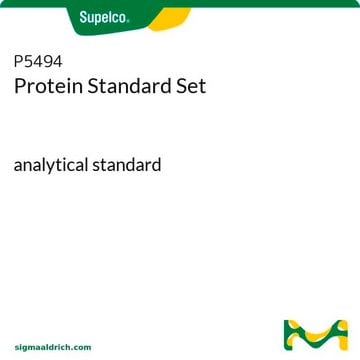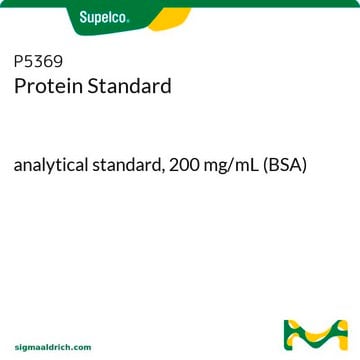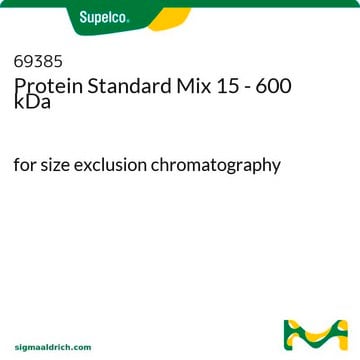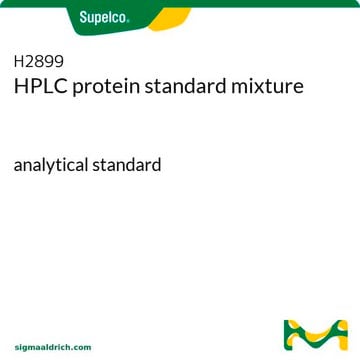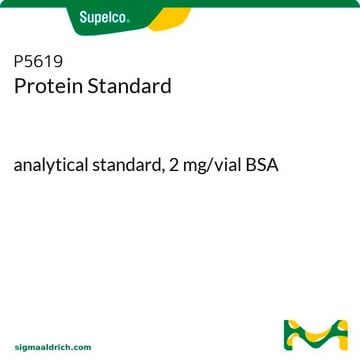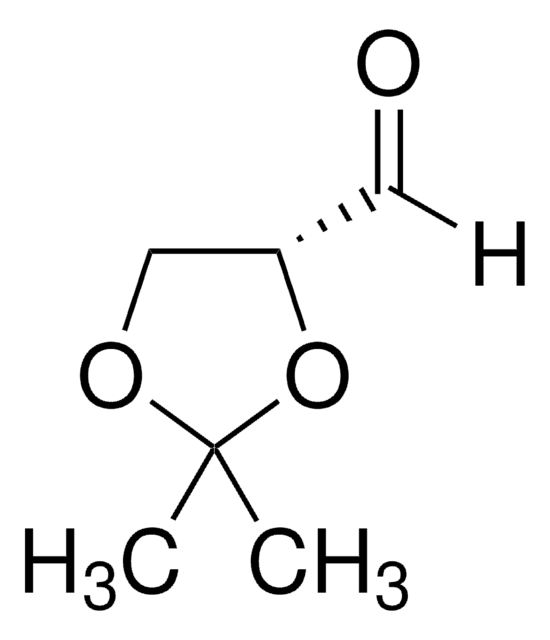P8994
Protein Standard, 80 mg/ml BSA
analytical standard
Se connecterpour consulter vos tarifs contractuels et ceux de votre entreprise/organisme
About This Item
Code UNSPSC :
85151701
Produits recommandés
Qualité
analytical standard
Niveau de qualité
Classe(s) chimique(s) de l'analyte
amino acids, peptides, proteins
Technique(s)
gel permeation chromatography (GPC): suitable
Application(s)
food and beverages
Format
neat
Température de stockage
2-8°C
Code de la classe de stockage
12 - Non Combustible Liquids
Classe de danger pour l'eau (WGK)
WGK 2
Point d'éclair (°F)
Not applicable
Point d'éclair (°C)
Not applicable
Choose from one of the most recent versions:
Certificats d'analyse (COA)
Lot/Batch Number
Don't see the Right Version?
If you require a particular version, you can look up a specific certificate by the Lot or Batch number.
Déjà en possession de ce produit ?
Retrouvez la documentation relative aux produits que vous avez récemment achetés dans la Bibliothèque de documents.
Ganary Dabiri et al.
The Journal of investigative dermatology, 128(10), 2518-2525 (2008-04-11)
Following severe traumatic or thermal injury to the dermis, hypertrophic scars (HTSs) often develop in humans. These scar fibroblasts (hypertrophic scar fibroblasts (HTSFs)) retain the myofibroblast phenotype persistently, rather than transiently as in acute wounds. These pathogenic myofibroblasts constitutively express
Guowu Hu et al.
The Journal of clinical investigation, 118(3), 1186-1197 (2008-02-09)
Autophagy is a process by which cells recycle cytoplasm and defective organelles during stress situations such as nutrient starvation. It can also be used by host cells as an immune defense mechanism to eliminate infectious pathogens. Here we describe the
Nabanita De et al.
PLoS biology, 6(3), e67-e67 (2008-03-28)
Environmental signals that trigger bacterial pathogenesis and biofilm formation are mediated by changes in the level of cyclic dimeric guanosine monophosphate (c-di-GMP), a unique eubacterial second messenger. Tight regulation of cellular c-di-GMP concentration is governed by diguanylate cyclases and phosphodiesterases
Umut Gazi et al.
The Journal of biological chemistry, 286(10), 7822-7829 (2011-01-06)
The mannose receptor (MR) is an endocytic type I membrane molecule with a broad ligand specificity that is involved in both hemostasis and pathogen recognition. Membrane-anchored MR is cleaved by a metalloproteinase into functional soluble MR (sMR) composed of the
Notre équipe de scientifiques dispose d'une expérience dans tous les secteurs de la recherche, notamment en sciences de la vie, science des matériaux, synthèse chimique, chromatographie, analyse et dans de nombreux autres domaines..
Contacter notre Service technique